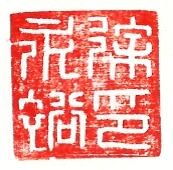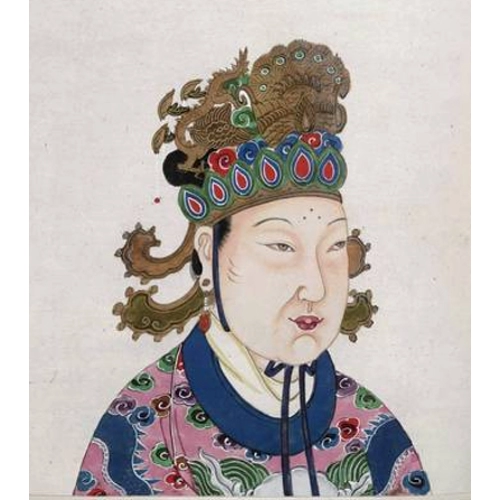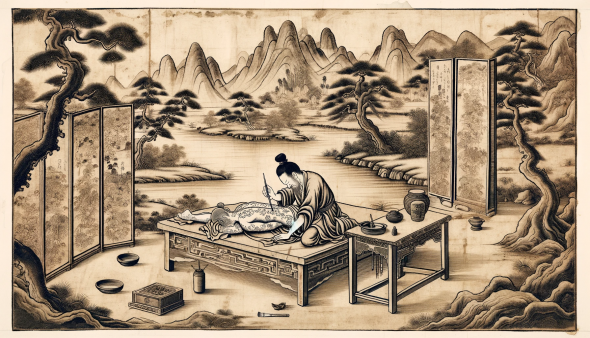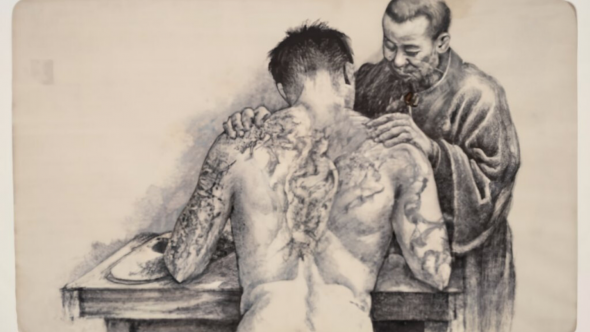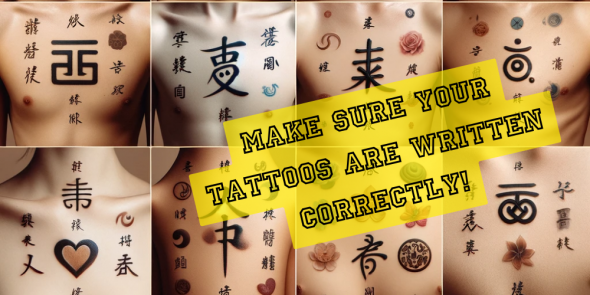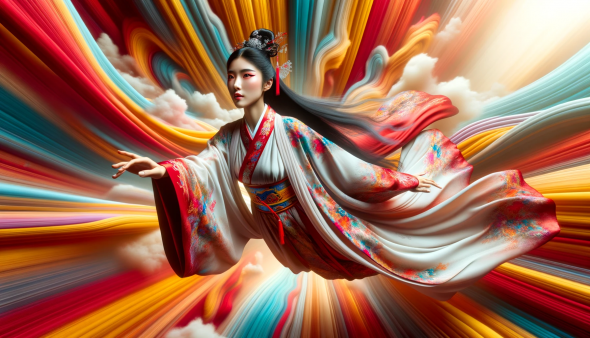Let's dive into the Tang Dynasty (唐朝, 618 to 907 AD), a time of opulence and chaos in China. (Stayed tuned: Tattoo ideas at the end!)
At the center, Wu Zetian (武則天), the only female emperor in China's history. Think Beyoncé, but with an empire instead of a music label. She didn't need dance moves; her political maneuvers were choreography enough. She was the original Queen B, ruling before hashtags even existed. It's a great story.
The Rise of Wu Zetian

Wu Zetian's life reads like a Hollywood script. Born into a noble family, she started as a low-ranking concubine. Most would have plateaued there, but not Wu. She climbed the ranks, became the Empress Dowager (ruling through her sons Emperors Zhongzong and Ruizong). She didn't break the glass ceiling; she shattered it and used the shards to build a palace. Her rise was so meteoric that if she were a stock, you'd regret not investing.
More Than Just a Throne Occupant
Administrative Reforms
Wu Zetian was a policy-making machine. She established a secret police force known as the "Dongchang," which, while controversial, was effective in consolidating her power and maintaining stability. She also restructured the bureaucracy, reducing corruption and increasing efficiency. Her reign saw the codification of laws and regulations, which provided a legal framework that was more organized than her predecessors.
Expansion of the Imperial Examination System
One of Wu Zetian's most enduring legacies was the expansion of the imperial examination system, China's system to select administrative officials. It was breaking down.
She opened up the exams to commoners, breaking the monopoly of the aristocracy on government positions. This was a game-changer, democratizing access to civil service and allowing talent to rise through the ranks based on merit rather than birthright. It was a move that would influence Chinese governance for centuries to come.
Support for Religion
Wu Zetian was a staunch supporter of Buddhism, which she used both as a spiritual guide and a political tool. She commissioned the construction of numerous temples and promoted Buddhist teachings.
This spread the religion and also helped to unify different regions and ethnic groups under a common spiritual banner. Her patronage of Buddhism also led to the flourishing of Buddhist art and culture during her reign.
The Thirteenth Beauty of Jinling: A Cultural Icon

Empress Wu was also a woman of culture. The book, 金陵十二釵 (jīn líng shí èr chāi)—The Twelve Beauties of Jinling, captures her well. These twelve main female characters in the classic novel Dream of the Red Chamber, each embodyied different facets of femininity.
Wu Zetian herself would've been the thirteenth beauty, a blend of all twelve, wrapped in imperial yellow robes. She was the epitome of grace and power, a combination so rare it's like finding a unicorn in a field of horses.
Promotion of Arts and Culture
While not strictly a "policy," Wu Zetian was a patron of the arts and sciences. Her court was a hub of cultural activity, attracting poets, scholars, and artists. The period is noted for its contributions to literature, including poetry and historical texts, many of which have been preserved and are studied to this day.
No Boundaries or Limits: 乾坤無疆
The idiom 乾坤無疆 (qián kūn wú jiàng) isn't just a fancy way to say limitless. It's rooted in ancient Chinese cosmology, representing the boundless nature of the universe and the interplay between yin and yang ☯. Wu Zetian's reign was a real-life manifestation of this concept. She broke boundaries, defied traditional gender roles, and expanded the empire both physically and metaphorically. She was as limitless as the universe itself, a human embodiment of 乾坤無疆.
Wu Zetian's Diplomacy: The Chess Master
Wu Zetian wasn't just a domestic policy guru; she was also a diplomatic powerhouse. She established relations with neighboring states and even distant empires. Her diplomatic letters were so eloquent that they could make a poet weep. She knew when to extend the olive branch and when to wield the sword, a balance that kept her enemies guessing and her allies loyal.
Military Campaigns and Territorial Expansion
Wu Zetian was not one to sit idly by when it came to military matters. She launched several military campaigns that expanded the Tang Dynasty's territory. Her reign saw the incorporation of parts of modern-day Korea, Mongolia, and Central Asia into the empire. While some of these campaigns met with mixed success, her aggressive military stance made her a formidable ruler in the eyes of both her allies and enemies.
The Controversies: Scandals and Power Plays

No ruler is without controversy, and Wu Zetian was no exception. Accusations of eliminating rivals and rewriting history books swirled around her. But let's be real, in the game of thrones, you win or you die. Wu Zetian was a survivor, and her methods, though questioned by some, were undeniably effective.
So, what's the moral of this story? Well, if Wu Zetian (武則天) were here, she'd probably say, Who needs morals when you can have an empire? She was a woman who had it all: power, intellect, and a reign that was as expansive as the cosmos. And just like the idiom 乾坤無疆 (qián kūn wú jiàng), her legacy remains vast, boundless, and absolutely uncontainable.
Wu Zetian Inspired Tattoo Ideas
Wu Zetian (武則天) serves as a powerful inspiration for strong, ambitious women. Here are seven tattoo ideas that combine both of these elements:
- 女強人 (nǚ qiáng rén) + Cherry Blossom
- A strong woman (女), this captures the essence of Wu Zetian's rule and her defiance of traditional gender roles.
- Placement: Upper arm or back
- Design: Entwine the characters "女強人" with a cherry blossom branch, blending traditional femininity with inner strength.
- 獨樹一幟 (dú shù yī zhì) + Wave
- To stand out and be unique. reflecting Wu Zetian's unparalleled reign and her ability to defy societal norms.
- Placement: Upper arm or back
- Design: Place the characters 獨樹一幟 inside a breaking wave, symbolizing the ability to stand out even in turbulent conditions.
- 乾坤無疆 (qián kūn wú jiàng) + Imperial Crown
- Heaven and Earth without boundaries, symbolizing limitless potential and ambition. The imperial crown could represent Wu Zetian's reign as the only female emperor.
- Placement: Rib cage or thigh
- Design: 乾坤無疆 in calligraphy (stylized script), with an intricately designed imperial crown above or below the text.
- 女中丈夫 (nǚ zhōng zhàng fū) + Sword
- A heroic woman, quite fitting for Wu Zetian. The sword could symbolize her military prowess.
- Placement: Forearm or calf
- Design idea: Add 女中丈夫 alongside a stylized sword, perhaps with ancient Chinese motifs.
- 破釜沉舟 (pò fǔ chén zhōu) + Dragon
- Meaning: Break the cauldrons and sink the boats, a point of no return or total commitment. The dragon could represent Wu Zetian's fierce determination.
- Placement: Ribcage or thigh
- Design: Position "破釜沉舟" with a dragon wrapped around them.
- 自強不息 (zì qiáng bù xī) + Lotus Flower
- To strive for self-improvement continuously, which aligns with Wu Zetian's lifelong pursuit of power and betterment. The lotus flower could symbolize purity and enlightenment, reflecting her support for Buddhism.
- Placement: Wrist or ankle
- Design: The characters "自強不息" encircling a lotus flower.
- 出類拔萃 (chū lèi bá cuì) + Phoenix
- To stand out from the crowd, epitomizes Wu Zetian's exceptional rise to power. The phoenix could symbolize rebirth and transformation.
- Placement: Back or upper arm
- Design: Position 出類拔萃 above or below a majestic phoenix in flight.
These tattoo ideas aim to capture the essence of Wu Zetian's extraordinary life, paired with the timeless wisdom encapsulated in Chengyu. Each design is meant to be both visually striking and deeply meaningful.
Sources:
- R. W. L. Guisso, "Wu Tse-T'ien and the Politics of Legitimation in T'ang China," 1978.
- Patricia Buckley Ebrey, "The Cambridge Illustrated History of China," 1999.
- N. Harry Rothschild, "Wu Zhao: China's Only Female Emperor," 2015.
Useful Links:
